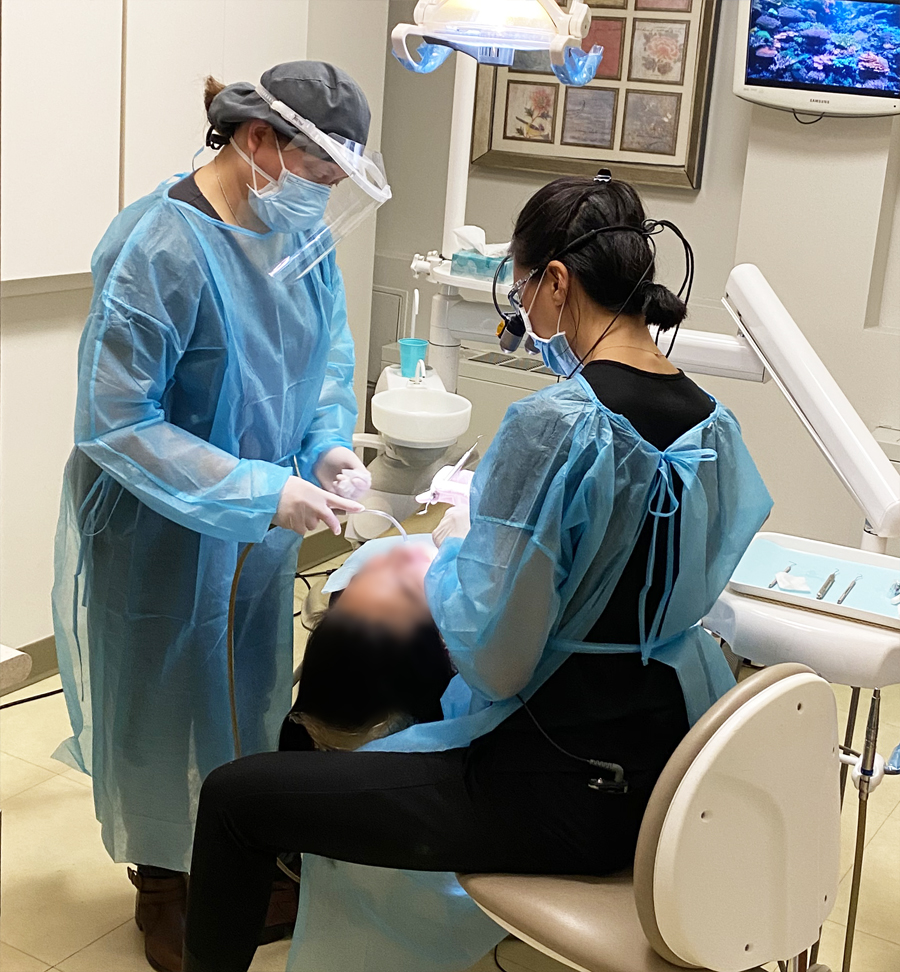The Benefits of Routine Appointments to a Dentist Eugene Oregon
The Benefits of Routine Appointments to a Dentist Eugene Oregon
Blog Article
Discover the Array of Dental Issues Dentists Generally Take Care Of
Dentists are tasked with addressing a broad spectrum of dental problems, each requiring specialized knowledge and strategies. From the widespread issue of tooth cavities triggered by microbial task to the more perilous development of gum illness, dental specialists should be adept at early detection and treatment. Tooth sensitivity, frequently resulting from used enamel, adds one more layer of intricacy, while the early identification of dental cancer can be life-saving. Additionally, misaligned bites demand personalized therapy plans to improve both performance and appearances. What details strategies do dental professionals employ to take care of these diverse obstacles successfully?
Tooth Cavities and Dental Cavity
Tooth cavities, additionally recognized as oral cavities, are created by the demineralization of tooth enamel due to acid-producing bacteria in the mouth. If left neglected, tooth cavities can lead to substantial oral difficulties, including infections and tooth loss.
To identify cavities and tooth degeneration, dental practitioners employ a combination of visual exams, oral X-rays, and often laser fluorescence gadgets. For more sophisticated degeneration, a dental expert may need to remove the endangered cells and restore the tooth with fillings made from products such as composite resin, amalgam, or porcelain.
Preventative measures are paramount in combating cavities and dental caries. Normal dental examinations, correct cleaning and flossing strategies, and a balanced diet plan reduced in sweet foods and beverages are fundamental techniques that sustain oral wellness and reduce the risk of cavities.
Periodontal Disease

This causes the periodontals to pull away from the teeth, producing pockets that become contaminated. As the body's immune system fights the microorganisms, the bone and connective tissue that hold teeth in place are damaged down.
Dentists diagnose gum tissue illness with professional examination and gum penetrating to gauge pocket depths around the teeth. Treatment may entail scaling and root planing to get rid of tartar and bacteria from tooth surface areas and under the gum tissues.

Tooth Sensitivity
Beyond gum tissue illness, another typical oral issue that patients regularly run into is tooth level of sensitivity. Identified by a sharp, transient discomfort in feedback to stimulations such as warm, chilly, wonderful, or acidic foods and drinks, tooth sensitivity can significantly influence a person's high quality of life.
Several aspects add to the growth of tooth sensitivity. Hostile brushing, using rough toothpaste, and the intake of acidic foods and drinks can wear down enamel. Furthermore, oral procedures, fractured teeth, and periodontal condition can expose the dentin. To alleviate tooth sensitivity, dental practitioners may recommend using tooth paste created for delicate teeth, fluoride therapies to enhance enamel, or dental bonding redirected here to cover revealed dentin. In severe instances, even more sophisticated therapies such as gum tissue grafts or root canals could be needed.
Eventually, addressing tooth level of sensitivity needs a comprehensive technique that includes both precautionary steps and targeted treatments to alleviate discomfort and safeguard the dental frameworks.
Oral Cancer
Oral cancer cells, a significant and possibly dangerous problem, frequently flies under the radar in routine oral treatment conversations. This kind of cancer can impact any type of component of the oral tooth cavity, including the lips, tongue, cheeks, flooring of the mouth, soft and tough tastes buds, sinuses, and throat. Early discovery is critical for successful therapy, yet numerous situations are detected at advanced phases due to refined first signs and symptoms.
Misaligned Bites
Misaligned bites, likewise understood as malocclusions, are an usual oral problem that can considerably impact both dental health and wellness and total lifestyle - eugene dentist. These conditions take place when the upper and lower teeth do not line up effectively, leading to problems in biting, eating, and even speaking. Malocclusions can be classified right into different kinds, consisting of overbites, underbites, crossbites, and open attacks, each presenting distinct difficulties that need tailored treatment strategies
The reasons for misaligned bites vary and can include hereditary factors, early loss of baby teeth, thumb sucking, and injuries to the jaw. Signs frequently consist of pain or pain in the jaw, regular attacking of the inner cheeks, and an increased threat of tooth degeneration and gum tissue illness as a result of trouble in preserving dental health.
Orthodontists and dental practitioners utilize a variety of treatments to resolve misaligned attacks, from clear aligners and typical dental braces to advanced surgical treatments in serious instances. Early medical diagnosis and therapy are vital to avoid complications such as temporomandibular joint (TMJ) conditions and uncommon wear on teeth. With detailed analysis and individualized therapy strategies, oral professionals play a crucial function more tips here in remedying malocclusions and boosting clients' dental function and looks.
Verdict
Dentists attend to a spectrum of dental issues, each with distinct challenges and treatment procedures. Cavities and dental caries result from bacterial task that endangers tooth enamel, while gum illness can rise from gingivitis Clicking Here to extreme periodontal conditions. Tooth sensitivity involves discomfort from thermal stimuli, necessitating particular care. Early discovery of dental cancer is essential for efficient treatment. Misaligned attacks effect both oral wellness and lifestyle, often requiring medical or orthodontic options to rectify.
To identify cavities and tooth degeneration, dental experts employ a combination of visual assessments, oral X-rays, and in some cases laser fluorescence tools.Beyond gum condition, one more typical oral concern that patients regularly come across is tooth sensitivity. Additionally, oral procedures, cracked teeth, and periodontal disease can reveal the dentin. To alleviate tooth level of sensitivity, dental experts might suggest utilizing toothpaste developed for delicate teeth, fluoride treatments to reinforce enamel, or dental bonding to cover revealed dentin. Tooth cavities and tooth degeneration result from microbial activity that endangers tooth enamel, while gum tissue illness can escalate from gingivitis to serious gum problems.
Report this page